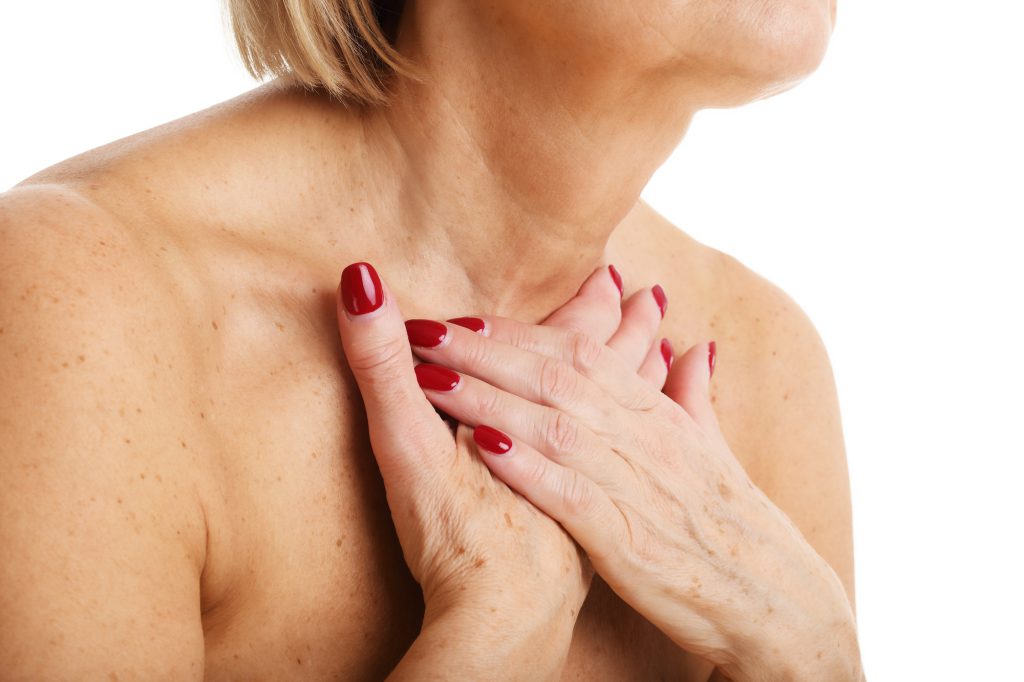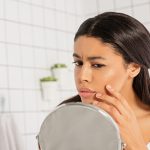 Everyone wants to have flawless skin, but as time goes by, many of us find dark spots pop up on our faces, hands, arms, or elsewhere. Whether you have heard them called age spots, sun spots, or liver spots, we are talking about the same thing.
Everyone wants to have flawless skin, but as time goes by, many of us find dark spots pop up on our faces, hands, arms, or elsewhere. Whether you have heard them called age spots, sun spots, or liver spots, we are talking about the same thing.
What Are Age Spots?
Technically known as “lentigo” or “lentigines,” age spots are small, dark areas that are a common occurrence as we age. They are primarily caused by excess sun exposure, which can cause the accumulation of melanin in particular places on the skin. Melanin is the microscopic pigment responsible for skin color, and when it increases in a small area, the result is an age spot. Age spots aren’t painful, and they are also not harmful to your health. But they can be a source of frustration for many patients who would prefer to keep their youthful, even-toned skin.Why Do We Get Age Spots?
Age spots tend to be more common as we grow older, but despite their various names, these discolorations are not caused directly by age or by a liver problem.Sun Exposure
Too much sun exposure can be your skin’s worst enemy. In addition to causing skin cancer and premature aging, prolonged exposure to harmful UV rays can affect melanin production, leading to the formation of age spots. Whether you have age spots or not, protecting your skin from the sun by using a full-spectrum sunscreen and covering up during the most sun-drenched hours of the day can help prevent more from forming and can help ward off other signs of premature aging.Genetics
It seems like genetics can play a role in just about everything, and age spots are no exception. If your relatives have a history of age spots, you are probably more likely to develop them yourself. However, this may be dependent on whether or not you have experienced excess unprotected sun exposure. This explains why many people who have spent a ton of time in the sun are lucky enough to avoid age spots, and some people who had less sun exposure may still get them.Hormonal Changes
Changes in certain hormones, such as those that occur during pregnancy, menopause, or as a result of certain medications, can also play a part in the development of age spots. For example, melanin production can increase as a result of estrogen decreases, which can impact the development of age spots.Your Age Spot Solution
While reducing sun exposure can help reduce your risk of age spots, once you have them, they will not go away on their own. But the good news is we can treat them.CryoCorrect
CryoCorrect is a minimally invasive treatment that is a safe and effective way to target and eliminate age spots, leaving you with more even, youthful-looking skin.How CryoCorrect Treatment Works
CryoCorrect treatment uses advanced cryotherapy technology to freeze and remove your unsightly age spots. During this cutting-edge treatment, CO2 is applied to the age spots, which is gentler than many other methods. Because it does not require temperatures as cold as liquid nitrogen-based treatments, healthy surrounding tissue is more safe. However, CO2 is effective in freeing the highly pigmented cells. And CryoCorrect is quick. We mean 5-10 seconds per spot quick. There is also no downtime, and you can get back to your regular daily life right away. Your age spots, on the other hand, will briefly become darker but will then flake away within a couple of weeks after your treatment.Limelight
If you are seeking to reduce age spots to a larger area of the skin, such as the entire face or chest, Limelight may be a better fit.How Limelight Works
Limelight uses Intense Pulsed Laser (IPL) energy to heat the deeper layers of skin and break up the pigmentation that accumulates to cause age spots. IPL treatments cover a larger area of the body than CryoCorrect and involve longer treatment times. However, Limelight is still considered a minimally invasive option with little downtime.Are You Ready to be Rid of Age Spots?
Age spots may be a natural part of aging, but that doesn’t mean you have to live with them. Contact us today to book your CryoCorrect of Limelight appointment.Recent Posts



